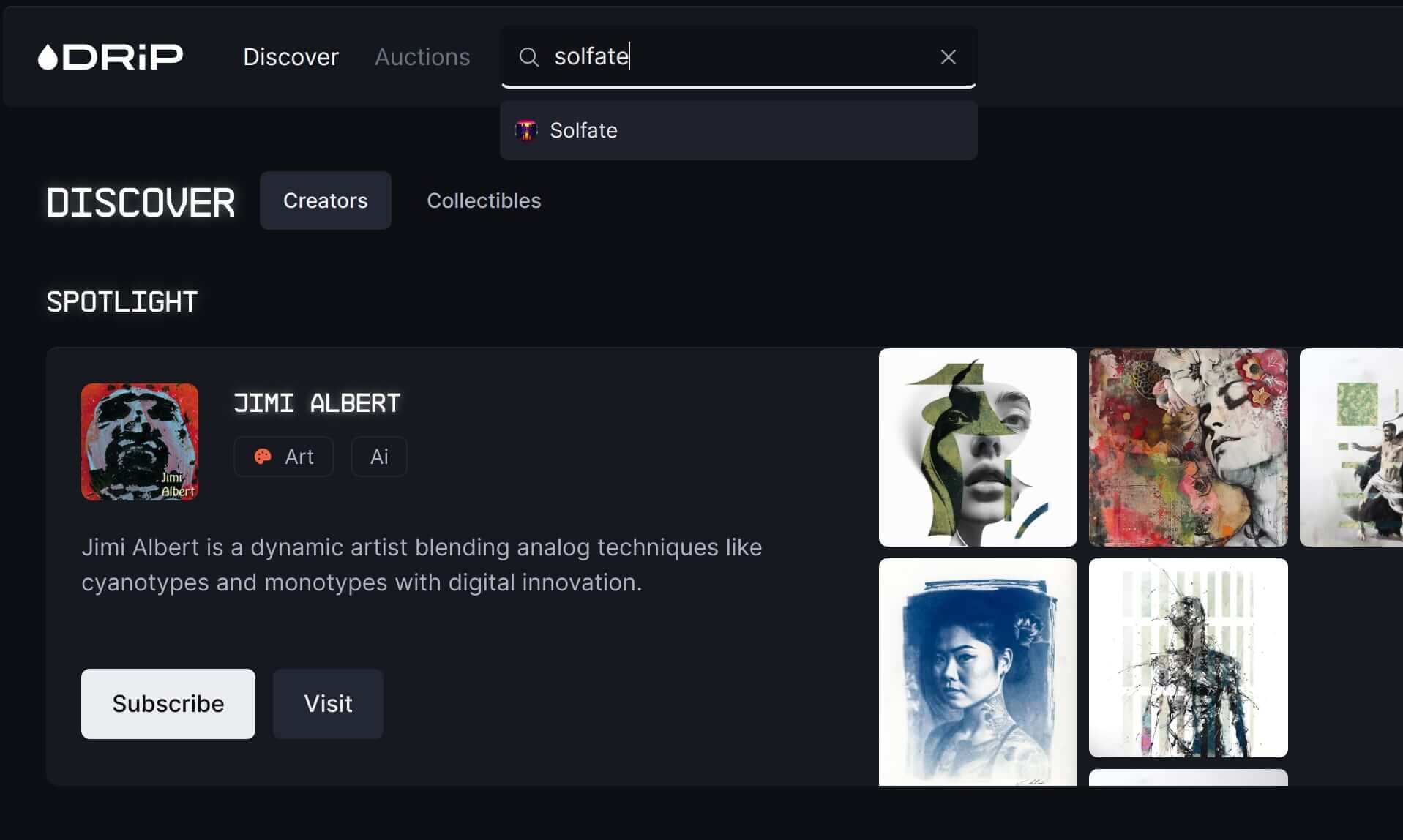Content creation is a major aspect of the Web3 industry, with artists, musicians, and other creators distributing their content and engaging with their respective communities. Today, content creators are always looking for the better ways to monetize their work, engage directly with audiences, and maintain control of their creative output. Traditional Web2 platforms such as YouTube, Instagram, and TikTok all have added features to help creators monetize their content.

Enter DRiP, a platform built on Solana offering creators a platform to distribute their content at scale whether it be art, music, videos, comics, podcasts, and other forms of content. DRiP currently is at the forefront of the Web3 creator economy, offering a decentralized, transparent, and equitable platform for creators to thrive.
DRiP utilizes NFT compression on Solana to distribute content to their community, where users are able to claim free NFT drops. Users can subscribe to their favorite creators on the platform, and use “droplets”, the native currency on the DRiP platform, to claim these drops. Currently, DRiP has amassed over 500k collectors and 200+ creators, minted 100M+ collectibles, and facilitated over $4M in sales across secondary markets. Also, our team at Solfate has recently gone live on DRiP, we’ll be posting and distributing tons of content there, be sure to subscribe to our creator page!
So what exactly defines the creator economy? The creator economy refers to the relatively new economic ecosystem, where individuals or groups monetize the content they produce directly to their consumers. The creator economy is based off a few principles and key characteristics:
- Direct-to-Consumer Models for Distribution
- Give content directly to consumers, removing the need for intermediaries such as publishers or record labels
- Platform Enablement/Creator Support
- Provide tools and infrastructure for creators to distribute content and
engage with their communities
- Ex. YouTube Studio, comments section, etc
- Provide tools and infrastructure for creators to distribute content and
engage with their communities
- Diversified Revenue Streams
- For DRiP, this includes droplet conversions, auctions, and royalties
- Autonomy & Ownership Over Content
- Creators have more control over their work and what is published
Social media influencers are one of the most commonly thought-of participants in the creator economy, with a vast majority of people consuming content through social media over other channels. In a recent piece by Pew Research, the top five platforms for content consumption are YouTube, Facebook, Instagram, Pinterest, and TikTok. Each of these platforms incorporates aspects of the creator economy to support creators and keeps the platform sustainable.
Although the majority of content is consumed through these giant companies, creators often struggle with low pay due to high margins and other issues, making them feel like current platforms are more focused on exploiting creators. This is where DRiP aims to serve the creator economy better.

From the creator’s side of the business, they now have a platform to distribute content to their users directly, being able to monetize their content through less-predatory business models that are found on Web2 social platforms. DRiP offers a better experience for creators to continuously release content while maintaining better engagement with their communities.
On the consumer side of the creator economy, DRiP provides a platform void of many of the bad experiences including paywalls, cookies, intrusive ads, and expensive rentals models. Consumers are able to pick and support creators directly, all while being able to consume the content for free, or at a very low cost.
Today, there is a wide variety of content and creators on the DRiP platform, spanning from comics, famous music groups, artists, podcast episodes and much more. As DRiP continues to grow its ecosystem of creators, we’ll see more diversity in the content produced, fostering a broader community of active users. Our team at Solfate is excited to start bringing our content over to the DRiP platform, so be sure to subscribe to our creator page!

